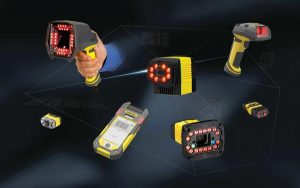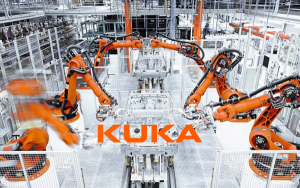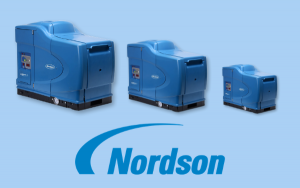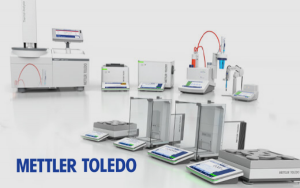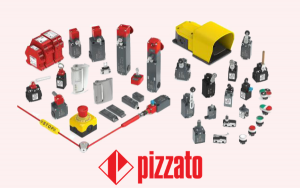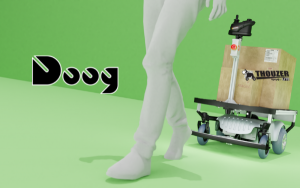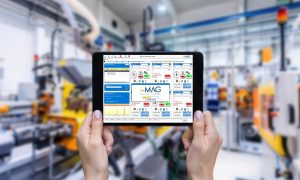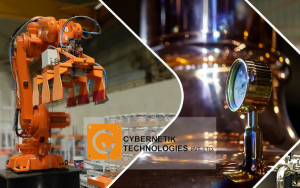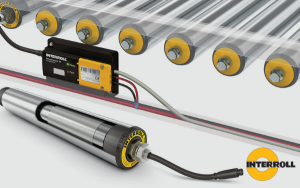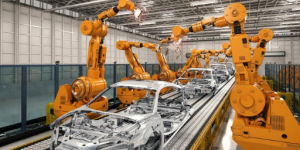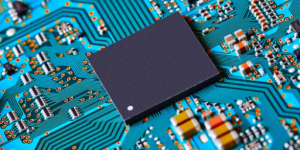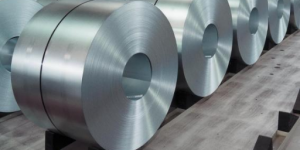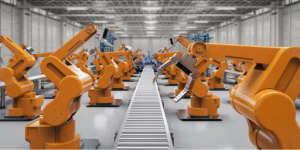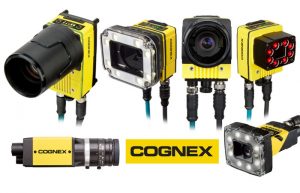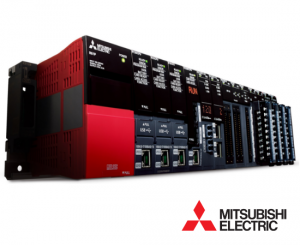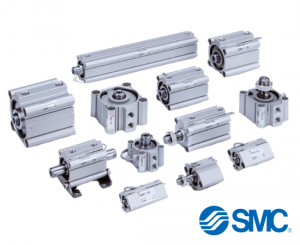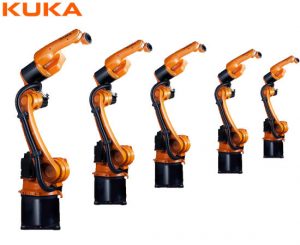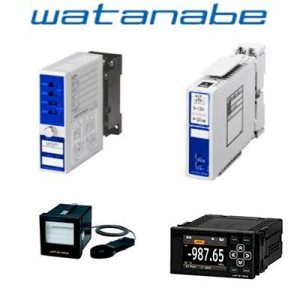Industrial robots are helping businesses improve their competitive edge and keep costs low by enabling the automation of key processes that improve worker safety, speed up production and improve productivity capacity.

What are industrial robots?
Industrial robots are one of the most common types of robots in use today, used in a variety of fields from auto manufacturing to agriculture, etc.
Industrial robots also known as articulated robotic arms are programmed to perform a multitude of tasks in a variety of environments. They are used in factories to automate the performance of repetitive tasks, such as coating equipment or parts; used in warehouses for picking, picking or sorting goods from distribution conveyors to fulfill consumer orders; or in a farm field to pick and place ripe fruit in storage trays. And as robotic technology evolves and industrial environments become more easily connected, the capabilities of robotic arms will expand to enable use in a variety of new environments and business models.
Previously, robotic arms required instruction to perform narrowly defined tasks, such as selecting an object type from a precise location with a specific orientation. The robot cannot identify a particular type of object among many, locate objects with some tolerance (area but not exact location), or adjust grasping based on object orientation. statue.
Today, thanks to devices such as the Machine Vision Cognex high-resolution depth camera, Beckoff CPU and GPU, robotic arms are enhanced with sensing and intelligence to perform new tasks. These intelligent, vision-enhanced robots can detect objects in their surroundings, recognize them by type, and manipulate them accordingly. These capabilities allow the robot to work more precisely and stably, safer and faster than before. They also expand the range of tasks the robot can complete.
Read more: BECKHOFF INDUSTRIAL COMPUTER SOLUTION
With advances in machine vision, AI, and networking technology, robotic arms can now see, analyze, and respond to their environment while transmitting valuable data and insights. management system of facilities and businesses. One area that benefits from this transition is equipment maintenance (including robotics). The robot can compute data at the edge or transmit it to a server or cloud for remote monitoring. This process enables predictive maintenance, thereby helping to reduce maintenance costs while improving machine uptime.
Read more: MACHINE VISON – WHAT IS MACHINE VISION?
Benefits of industrial robots:
Businesses can realize several benefits from industrial robotic arms:
Improved safety: Robotic arms help keep workers safe by operating in hazardous environments and performing jobs with a high risk of human injury.
Improve efficiency and productivity: Robotic arms can operate 24 hours a day, seven days a week without fatigue, allowing businesses to keep production, inspection or other tasks related continue to increase production.
Improved accuracy: In essence, robotic arms perform more consistently and accurately than humans for tasks that require high or consistent accuracy.
Greater flexibility: As business priorities change, robotic arms can easily be replaced for new operations or attached to different platforms, such as autonomous mobile robots ( AMR) , static assembly line platform or wall or shelf, if needed.
Read more: AMR mobile robot in smart factory
Components of industrial robot arm:
Robotic arms, aptly named for their resemblance to human arms, are usually attached to a base.
The arm contains many joints that act as shafts allowing range of motion. The more joints the robot arm has, the more freedom of movement it has. Most industrial robotic arms use four to six joints, providing the same number of rotational axes for movement.
In addition to the rotary joints, robotic arm components include the robot controller, an arm’s terminal tool, actuators, sensors, vision system, electrical system, and software components .
Take a closer look at a robotic arm pictured below:

Robot arm app:
One of the key advantages of industrial robotic arms is their versatility to support a wide range of applications — from the simplest to the most complex in the safest or harshest environments. Automating these types of tasks not only keeps humans out of potentially dangerous situations, but also allows those workers to take on high-value tasks like communicating with customers.
Here are some of the most common ways manufacturers are using robotic arms today:
Palletizing:
Robotic arms can be used to automate the process of placing goods or products on pallets. By automating the process, loading and unloading becomes more precise, cost-effective and predictable. The use of robotic arms also frees workers from performing tasks that pose a risk of bodily injury.
Material handling:
Material handling robotic arms can help create a safe and efficient warehouse by ensuring goods and materials are properly stored, easy to find, or transported correctly. Automating these processes can help expedite shipping of goods to customers, prevent workplace accidents, and improve facility efficiency.
Weld:
Welding is a task that can be performed by robots in advanced industrial environments such as automobile manufacturing. Due to its critical impact on product quality, welding is an excellent candidate for advanced robotics with AI-enhanced vision and vision for inline quality inspection.
Check quality:
Performing quality checks is usually completed at the end of the production line, which delays the detection of production quality problems. By augmenting visionary robots and AI systems, businesses can benefit from real-time inspection, which reduces waste and downtime.
Select and Set:
Pick and place robots are commonly used in modern manufacturing and logistics. They are equipped with advanced machine vision systems to identify an object, capture it, and move it from one location to another — quickly and efficiently — to speed production and distribution. chemical.
“One of the key advantages of industrial robotic arms is their versatility to support a wide range of applications — from the simplest to the most complex in the safest or harshest environments.”
Contact us immediately if you have a need for Industrial Robots:
Vu Le Technology Company Limited – specializes in industrial automation equipment, factory automation solutions and robotics.
Address: 27 Xuan Quynh, Gia Hoa Residential Area, Phuoc Long B Ward, City. Thu Duc, HCMC
Hotline: (028) 3620 8179 / 3620 8176 / 3620 8177
Fax: (028) 3620 8178
Mail: info@vuletech.com
Source: Intel





